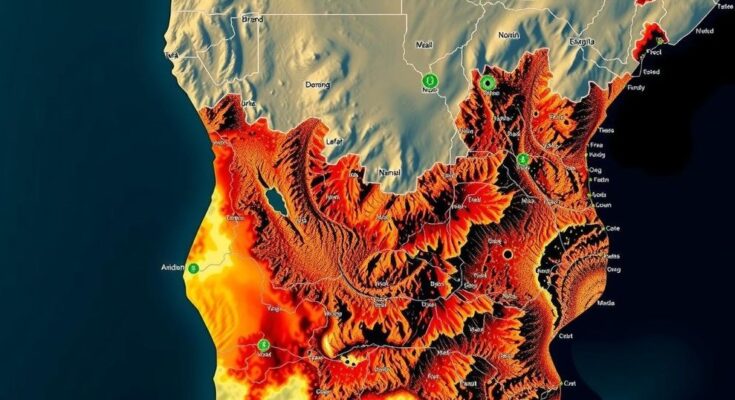Southern Africa faces its worst drought in a century, affecting over 27 million people. More than 21 million children are malnourished as food scarcity escalates. Key nations have declared disasters as crop and livestock losses mount, with conditions expected to worsen until the next harvest. The drought is intensified by climate change and has prompted drastic measures, including wildlife culling for food supply.
Souther Africa is currently experiencing its worst drought in a century, significantly impacting millions of lives. According to the United Nations World Food Programme (WFP), over 27 million individuals are affected, with 21 million children facing malnutrition as a consequence of food scarcity. Nations including Lesotho, Malawi, Namibia, Zambia, and Zimbabwe have formally declared national disasters as the drought has resulted in widespread crop failures and livestock losses. The situation is expected to worsen until new harvests can be anticipated in March or April of the following year.
This severe drought, exacerbated by climate change and the El Niño weather phenomenon, has led to declining agricultural yields and has devastated the livelihoods of tens of millions who depend on rain-dependent farming. Consequently, the agricultural sector in Zambia has lost approximately 70 percent of its harvest, while Zimbabwe has recorded an 80 percent loss. The absence of adequate rainfall has also diminished hydropower outputs, causing substantial electricity shortages in these countries.
In response to the dire situation, authorities in Namibia and Zimbabwe have resorted to culling wildlife, including elephants, to provide sustenance for the hungry populace. The long-term consequences of climate change in sub-Saharan Africa are alarming, as the region is particularly susceptible due to its reliance on natural resources and agricultural practices. Experts have expressed concerns regarding the negative implications of climate-induced droughts on the quality and success of various crops, further jeopardizing food security.
The ongoing drought in Southern Africa poses a serious humanitarian crisis, magnified by various environmental factors. Chief among these is the El Niño phenomenon, which has been associated with below-average rainfall in the region. The reliance of many communities on rain-fed agriculture renders them particularly vulnerable to climatic shifts and variations. Additionally, the consequences of climate change are increasingly evident, as rising temperatures and unpredictable precipitation patterns threaten the sustainability of food production. Furthermore, livestock deaths and crop failures threaten both food security and local economies, leading to assertions from global agencies about the profound impact of this natural disaster.
The unprecedented drought currently affecting Southern Africa is an urgent humanitarian crisis that places millions of lives at risk. The combination of environmental changes, reliance on rain-fed agriculture, and inadequate resources to address climate resilience are converging to create a perfect storm. Immediate and decisive action from governmental and humanitarian organizations is imperative to mitigate the effects and to support the affected populations until normal agricultural conditions can be restored.
Original Source: www.aljazeera.com




